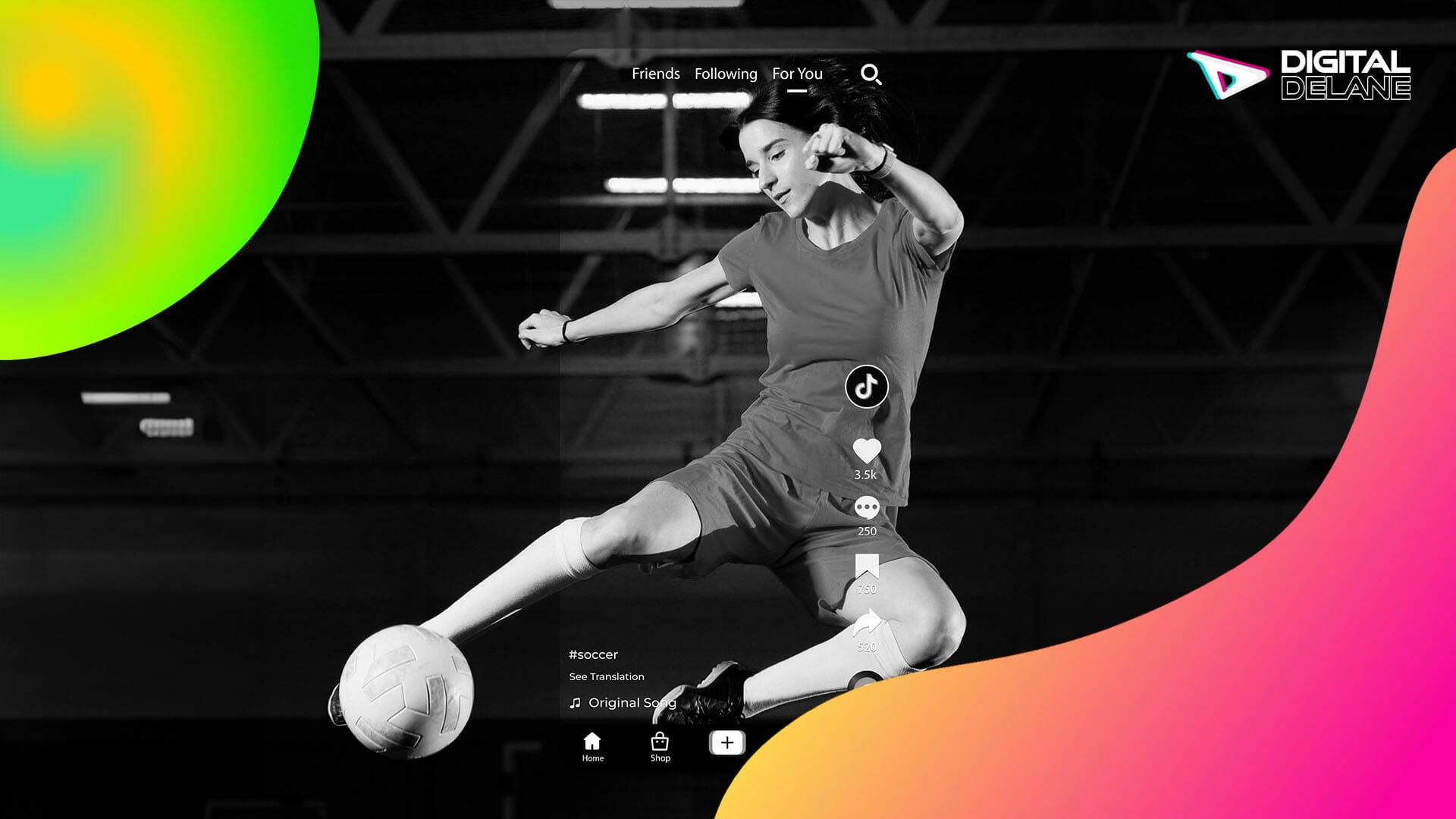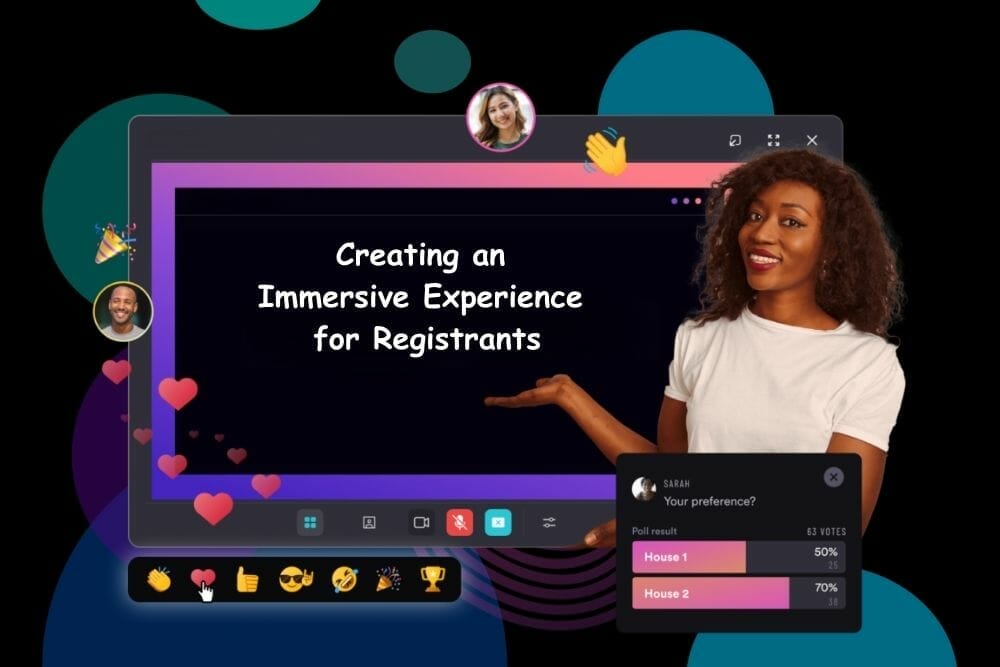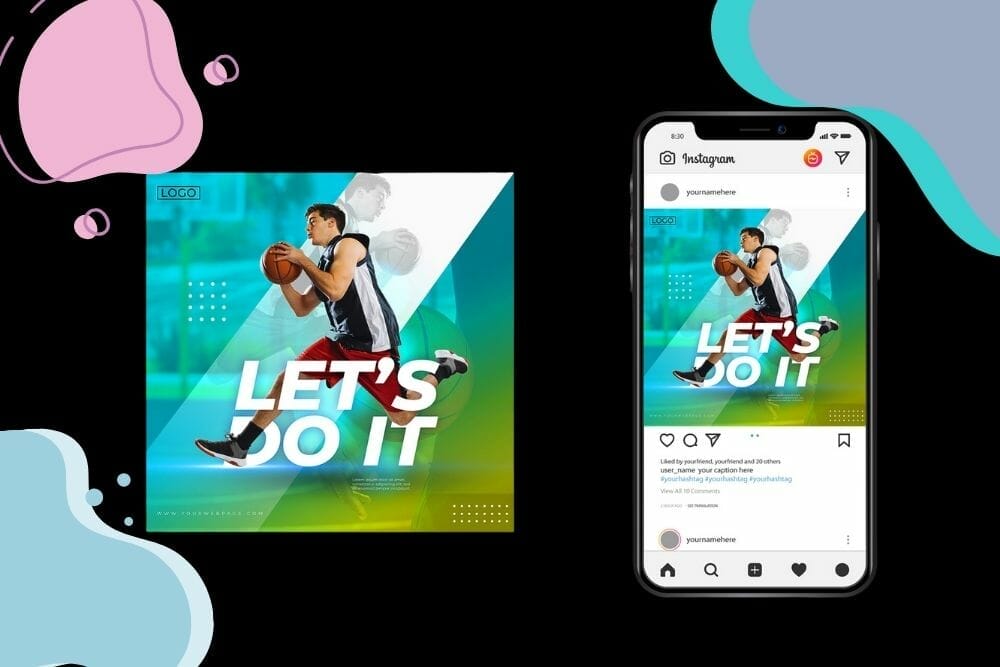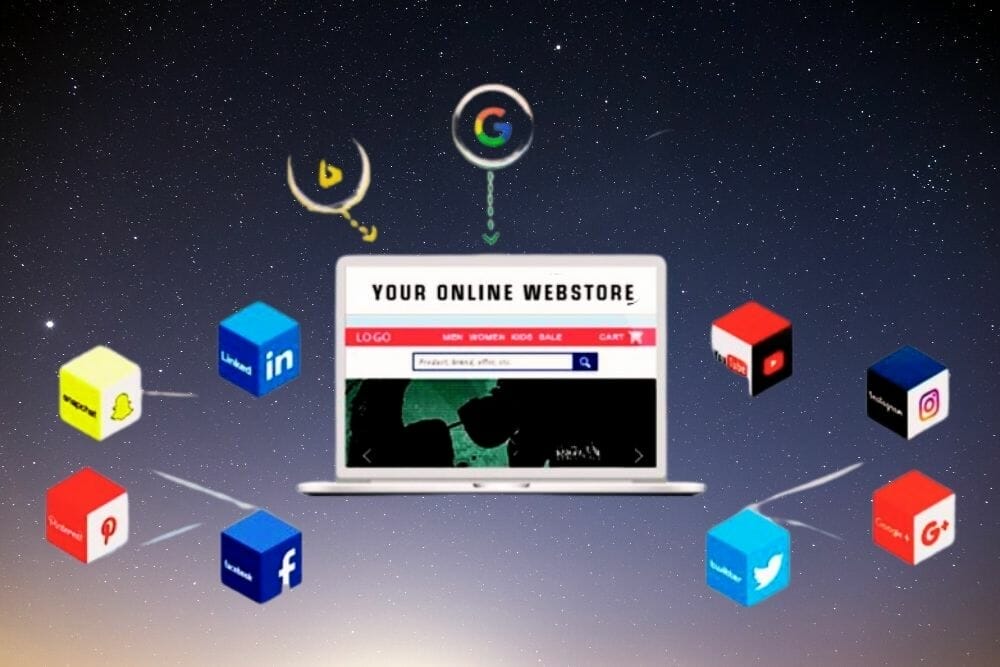Social Media Elevation Strategy for Sports Club Social Media Account

Sports clubs are facing increasing competition for fans’ attention, both online and offline. A well-crafted social media elevation strategy can help sports clubs stand out from the crowd and reach new audiences. In the sports business world, fast-paced digital topography, social media has become an indispensable tool for sports clubs aiming to engage their fans, attract sponsors, and elevate their online presence.
Digital Delane has a proven track record of success, helping sports clubs achieve their social media goals through a strategic approach that focuses on creating high-quality content, engaging with fans, and tracking results. This blog will explore a comprehensive Social Media Elevation Strategy explicitly tailored for sports clubs. Whether managing a local team or a professional organization, this guide will provide the insights and tactics to take your sports club’s social media account to new heights, fostering a stronger connection with your audience and unlocking exciting growth opportunities.


In today’s digital world, social media is an essential tool for sports clubs to connect with fans, promote their brand, and drive engagement. However, with so many sports clubs vying for attention on social media, it can be difficult to stand out from the crowd.
That’s where social media elevation strategies come in. A well-crafted social media elevation strategy can help sports clubs boost their reach, engagement, and impact on social media.
Here are a few key social media elevation strategies:
Content Creation Strategy:
Your social media content strategy should be tailored to your specific goals and audience. However, there are some general tips that all sports clubs can follow to create engaging and effective content:
- Focus on quality over quantity: It’s better to post a few high-quality pieces of content each week than to post a lot of low-quality content.
- Mix up your content formats: Don’t just post text updates. Include photos, videos, infographics, and other types of content to keep your audience engaged.
- Tell stories: People love stories, so use your social media content to tell stories about your players, coaches, fans, and the sports club itself.
- Be authentic: People can spot a fake from a mile away, so be yourself and let your personality shine through in your content.
- Interact with your audience: Social media is a two-way street, so make sure to interact with your followers by responding to their comments and questions.


Here are some specific content ideas that sports clubs can use to engage their audience on social media:
- Player profiles: Introduce your players to your fans by sharing their stories, stats, and behind-the-scenes photos and videos.
- Game highlights: Share highlights from your games to get fans excited and to promote your next game.
- Behind-the-scenes content: Give your fans a glimpse behind the curtain by sharing photos and videos from practices, team meetings, and other events.
- Fan contests: Run contests and giveaways to engage your fans and give them a chance to win prizes.
- Community engagement: Share content about your sports club’s community involvement and encourage fans to get involved.
You can also use social media to promote your upcoming events and ticket sales. For example, you can create event pages on Facebook and Instagram, and you can run Twitter polls to gauge fan interest in certain events. No matter what your social media goals are, creating great content is essential to achieving them. By sharing content that is informative, engaging, and visually appealing, you can attract and retain your audience, build relationships with your fans, promote your brand, and drive business results.
Platform Selection and Optimization:
When selecting social media platforms for your sports club, it is important to consider your target audience and your goals. Where do your fans spend their time online? What platforms are they most active on? Once you know your audience’s preferences, you can choose the platforms that are most likely to reach them. An experienced agency can help you choose the right platform effectively.
Here is a brief overview of the most popular social media platforms for sports clubs:
- Facebook: Facebook is a great platform for reaching a wide audience, including both fans and potential fans. It is also a good platform for sharing long-form content, such as blog posts and articles.
- Twitter: Twitter is a great platform for sharing real-time updates and breaking news. It is also a good platform for engaging with fans and other sports organizations.
- Instagram: Instagram is a great platform for sharing photos and videos. It is a particularly popular platform among younger fans.
- TikTok: TikTok is a great platform for sharing short-form videos. It is a particularly popular platform among younger fans.


Once you have selected the social media platforms that you are going to use, it is important to optimize your profiles and content for those platforms.
Here are some tips for optimizing your social media content:
- Use relevant hashtags: Hashtags are a great way to get your content seen by more people. When choosing hashtags, be sure to use a mix of popular and niche hashtags.
- Post at the right times: Different social media platforms have different peak times of activity. It is important to post your content when your audience is most likely to be online.
- Interact with your audience: Respond to comments and questions, and participate in conversations.
Audience Engagement Tactics:
Building and growing a sports club’s social media following requires several crucial strategies. Consider the following tactics to expand your online presence and enhance audience engagement effectively.


Here are some audience engagement tactics that sports clubs can use on social media:
- Run contests and giveaways: This is a great way to generate excitement and engagement around your social media channels. You can give away tickets to games, merchandise, or other prizes.
- Ask questions and encourage discussion: Ask your followers open-ended questions about their favorite players, teams, or sports. This is a great way to get them talking and interacting with each other.
- Use polls and surveys: This is another way to get your followers involved and to learn more about their interests. You can ask them questions about their favorite content, which players they want to see more of, or how you can improve your social media presence.
- Host live Q&As and events: This is a great way to give your followers a behind-the-scenes look at your organization and to interact with your players and coaches in real time.
- Partner with other sports organizations and influencers: This is a great way to reach a new audience and to cross-promote your content. You can partner with other sports organizations to host joint contests or giveaways, or you can partner with influencers to create sponsored content.
By following these tips, sports clubs can create a social media presence that is both informative and engaging. This can be very helpful in boosting social media engagement.
Content Calendar and Scheduling:
A social media content calendar is a tool that helps you plan and schedule your social media posts in advance. It can help you save time, be more consistent with your posting, and ensure that you are sharing a variety of content. Maintaining an effective content calendar and scheduling strategy is essential in digital marketing and content creation. Creating a social media content calendar ensures a consistent online presence by planning and organizing content in advance.


Here are some tips for scheduling your social media posts:
- Schedule posts for different times of day and on different days of the week. This will help you reach a wider audience and keep your social media presence active.
- Use a social media management platform to schedule your posts in advance. This will save you time and help you stay organized.
- Track your social media performance and adjust your scheduling strategy as needed. For example, if you see that your posts are getting more engagement on certain days of the week or at certain times of day, you can schedule more posts for those times.
Hashtag Strategies:
Effective hashtag strategies are essential in digital marketing for enhancing online visibility and engagement. When promoting a sports club, utilizing relevant hashtags is critical. Incorporating popular and niche sports-related hashtags in your social media posts helps you reach a highly targeted audience of sports enthusiasts. This aligns your content with trending sports discussions, maximizing its impact.


Here are some tips for using hashtags effectively:
- Use relevant hashtags: When choosing hashtags, think about the keywords that your target audience is likely to search for. You can also use social media listening tools to see which hashtags are popular among your target audience.
- Use a mix of popular and niche hashtags: Popular hashtags will help your content reach a wider audience, but they may be more competitive. Niche hashtags will help your content reach a more targeted audience, but they may have less reach.
- Don’t overuse hashtags: Too many hashtags can make your posts look spammy. Aim to use 5-10 hashtags per post.
- Use branded hashtags: Branded hashtags are hashtags that are unique to your sports club. You can use branded hashtags to promote your brand and to build a community around your club.
Influencer Partnerships:
Influencer partnerships can be a great way for sports clubs to reach a wider audience, engage with fans, and promote their brand on social media. By partnering with influencers who have a following among your target audience, you can tap into their influence and reach a new group of potential fans.


Here are some tips for developing successful influencer partnerships:
- Identify the right influencers: When choosing influencers to partner with, it is important to consider their following, their engagement rates, and their content style. You want to partner with influencers who have a following among your target audience and who create content that is relevant to your brand.
- Develop clear goals: What do you want to achieve with your influencer partnership? Do you want to increase brand awareness, drive traffic to your website, or generate leads? Once you know your goals, you can develop a campaign that is tailored to achieve them.
- Provide creative freedom: Influencers are most successful when they are able to create content that is authentic to their brand. Give your influencer partners the creative freedom to create content that they think their audience will love.
- Track your results: It is important to track the results of your influencer partnerships so you can see what is working and what is not. Use social media analytics tools to track metrics such as reach, engagement, and conversions.
Analytics and Performance Tracking:
Analytics and performance tracking are essential for sports clubs to measure the success of their social media strategies. By tracking key metrics, sports clubs can identify what is working and what is not, and make adjustments accordingly.


Here are some key metrics that sports clubs should track:
- Reach: Reach is the number of unique people who see your content.
- Impressions: Impressions are the number of times your content is seen, regardless of how many people see it.
- Engagement: Engagement refers to any interaction with your content, such as likes, comments, shares, and clicks.
- Conversions: Conversions are the actions that you want your audience to take after seeing your content, such as signing up for your newsletter, purchasing tickets, or following you on social media.
Do you want to grow faster? Schedule a free consultation call with an expert
Community Building and Fan Engagement:
In the realm of sports, fostering a loyal online community is paramount. Community building and fan engagement are essential for sports clubs to build a strong and loyal fan base. By creating a sense of community among their fans, sports clubs can encourage fans to interact with each other and with the club itself. This can lead to increased brand awareness, ticket sales, and merchandise sales.


Here are some tips for building a strong community and engaging fans on social media:
- Use social media to promote your club’s events and initiatives: This includes games, training sessions, community events, and merchandise releases.
- Partner with local businesses and organizations: This can help you reach a new audience and promote your club to the community.
- Create a social media ambassadors program: This is a great way to identify and engage with your most passionate fans. You can give your ambassadors special access to content and experiences, and you can also task them with promoting your club on social media.
- Use social media analytics to track your progress: See what content is resonating with your audience and what content is not. This information can help you improve your content and engagement strategies.
Creating an Immersive Experience for Registrants:
Creating an immersive experience for registrants is essential for sports clubs to attract and retain members. By providing registrants with a sense of community and belonging, sports clubs can encourage them to participate in activities and events, and to support the club overall.


Here are some tips for creating an immersive experience for registrants:
- Use technology to enhance the registrant experience: For example, sports clubs can use mobile apps to provide registrants with easy access to information about the club, its activities and events, and their membership status.
- Personalize the registrant experience: Sports clubs can use data to personalize the registrant experience. For example, they can send registrants targeted emails and social media posts based on their interests and participation history.
- Get feedback from registrants: Sports clubs should regularly collect feedback from registrants to identify areas for improvement. This feedback can be used to enhance the registrant experience and to ensure that the club is meeting the needs of its members.
Paid Advertising and Budget Allocation:
Paid advertising can be a great way for sports clubs to reach a wider audience, generate leads, and drive sales. However, it is important to allocate your paid advertising budget wisely in order to get the most out of your campaigns.


Here are some tips for allocating your paid advertising budget:
- Set goals for your campaigns: What do you want to achieve with your paid advertising campaigns? Do you want to increase brand awareness, generate leads, or drive sales? Once you know your goals, you can allocate your budget accordingly.
- Choose the right platforms: There are a variety of paid advertising platforms available, such as Google Ads, Facebook Ads, and Twitter Ads. Choose the platforms that are most likely to be used by your target audience.
- Set realistic budgets: It is important to set realistic budgets for your paid advertising campaigns. Don’t overspend, but don’t underspend either. It may take some time to experiment and figure out what works best for your club.
- Track your results: It is important to track the results of your paid advertising campaigns so you can see what is working and what is not. Use analytics tools to track metrics such as impressions, clicks, conversions, and cost per conversion.
- Adjust your strategy as needed: Once you have some data, you can adjust your paid advertising strategy as needed. This may involve changing your budgets, targeting, or creative.
Cross-promotion with Other Clubs or Brands:
Cross-promotion with other clubs or brands can be a great way for sports clubs to reach a wider audience, promote their brand, and generate new leads. By partnering with other organizations, sports clubs can tap into each other’s audiences and offer cross-promotional benefits to their members and fans.


- Offer discounts to each other’s members: For example, a sports club could offer a discount on membership to members of a local fitness club. The fitness club could reciprocate by offering a discount on membership to members of the sports club.
- Run joint contests or giveaways: For example, two sports clubs could partner to run a contest where the prize is tickets to a game or event.
- Co-host events: For example, a sports club could partner with a local business to host a community event, such as a health and fitness fair.
- Create co-branded content: For example, a sports club could partner with a clothing brand to create a line of co-branded merchandise.
- Cross-promote each other’s social media accounts: For example, two sports clubs could share each other’s posts on social media.
Consistent Brand Messaging Across All Channels:
Consistent brand messaging across all channels is essential for sports clubs to build a strong and recognizable brand. By using the same voice, tone, and messaging across all of their touchpoints, sports clubs can create a seamless and cohesive experience for their fans.


Here are some tips for ensuring consistent brand messaging across all channels:
- Use the same logo and tagline across all channels: This includes your website, social media accounts, marketing materials, and merchandise.
- Use the same brand colors and fonts across all channels: This will help to create a cohesive visual identity for your brand.
- Use the same brand voice and tone across all channels: This includes your written content, social media posts, and customer service interactions.
- Tell the same brand stories across all channels: Highlight your club’s history, values, and culture in your content and marketing materials.
- Use the same branding on all of your social media accounts: This includes your profile pictures, cover photos, and bios.
Crisis management on social media is essential for sports clubs to protect their reputations and maintain the trust of their fans. In the event of a crisis, sports clubs need to be able to respond quickly and effectively to minimize the damage and maintain a positive brand image.


Here are some tips for crisis management on social media:
- Use social media analytics to track the sentiment around your brand: This can help you to identify potential crises early on and develop a response plan.
- Use social media listening tools to monitor for mentions of your brand: This can help you to identify and respond to negative comments and questions quickly.
- Have a team of trained social media crisis managers in place: This team should be responsible for developing and executing your social media crisis management plan.
- Practice your crisis management plan regularly: This will help you to ensure that everyone involved knows their role and responsibilities in the event of a crisis.
The Sacred Heart Cathedral case study offers an in-depth analysis of how a sports club harnessed the power of social media to engage fans, increase brand awareness, and drive revenue.


The Challenges:
Sacred Heart Cathedral’s main challenge was the lack of a social media presence, not having a properly structured content creation process or account management process, an inconsistent visual aesthetic, and no unique emphasis or expression from other schools. They needed a proper Social Media Elevation Strategy to level up their marketing efforts to match and surpass that of their rival schools.
- Immersive Experience Design: Sacred Heart Cathedral plans to create a captivating journey for potential registrants, offering engaging content and personalized interactions to make its Executive Education programs more prominent.
- Alignment Across Channels: The institution aims to synchronize its marketing channels, ensuring a consistent strategy and message that aligns with its values and objectives.
- Consistent Customer Messaging: Sacred Heart Cathedral intends to deliver a uniform message to customers across all platforms, fostering trust and reinforcing its values for increased enrollment in Executive Education programs.
The Results:
- Sacred Heart Cathedral has a strong presence on Instagram, with nearly 1794 followers, showcasing its vibrant online community.
- With 2806 Twitter followers, Sacred Heart Cathedral maintains an active and engaged audience on this popular social media platform.
- Achieving an impressive joint engagement rate of 3.17%, Sacred Heart Cathedral effectively connects with its followers, fostering high interaction and support.
Stay ahead in the sports social media world with a keen eye on Emerging Trends. Keeping your finger on the vibration of the latest developments is crucial for sports organizations and athletes to maintain a solid online presence at the highest level. This involves major competition continually monitoring the rapidly evolving landscape and being prepared to adapt. It’s essential to incorporate emerging platforms and technologies. Whether adopting virtual reality experiences for fans or leveraging the power of augmented reality for interactive engagement, staying innovative is critical.


Additionally, integrating data analytics and artificial intelligence can provide valuable insights into fan behavior and preferences. By staying updated and embracing emerging trends, sports entities can create a more engaging and immersive digital experience for fans, build brand loyalty, and maximize their reach on social media platforms. Take advantage of these opportunities to connect with your audience and stay relevant in the ever-evolving sports social media world.
Conclusion:
Incorporating Digital Delane‘s social media elevation strategy is a game-changer for sports club social media accounts. This comprehensive approach increases online visibility and fosters a deeper connection with fans and potential sponsors. By implementing this strategy, sports clubs’ on-site internship program can elevate their social media presence globally, creating a robust digital footprint of the past decade that resonates with the target consumer audience.


Leveraging innovative tactics, engaging content, and data-driven insights, clubs can strengthen their brand, boost fan engagement, and ultimately drive success both on and off the field. In a digital age where social media plays a pivotal role in sports marketing, adopting the Digital Delane marketing strategy is a winning move that can transform a sports club’s online presence and drive tangible results.











